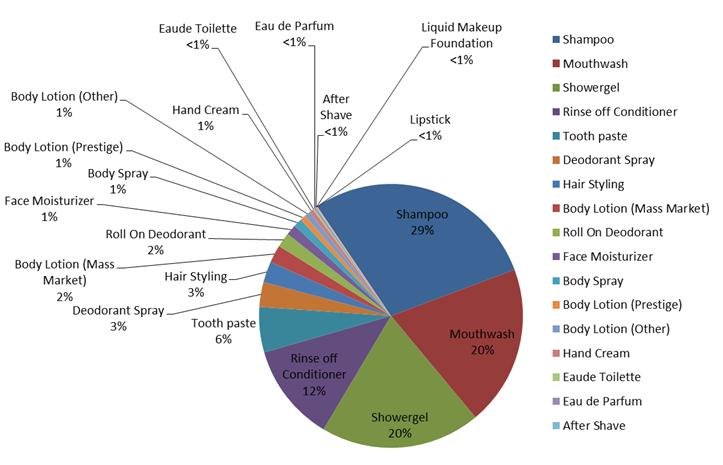It is a common rule that 20% of our efforts produce 80% of our results. Therefore, subsequently, 80% of our efforts produce only 20% of our results. This ‘80/20 rule’ was first discovered in 1906 by Vilfredo Pareto, an Italian economist.
Pareto found that 80% of land in Italy was owned by 20% of the people. He also discovered that 20% of pea pods in his garden produced 80% of the peas. This 80/20 rule has since been found to be true in various areas including business, computers and health. So can this 80/20 rule be applied to cosmetic exposure? Read on to find out...
In cosmetic exposure, let’s explore if the majority (80%) of product exposure to a population is caused by a minority (20%) of products. To tell whether this 80/20 rule holds true we will need to calculate the aggregate exposure of cosmetic products to the population. Aggregate exposure refers to the exposure from the (sometimes many) products that a subject will use during a day. The combination of products that people use will contain numerous chemicals, and we may want to determine which of those products are the main contributors to the majority of product exposure. So how do we calculate the aggregate exposure to subjects in a population?
To do this, we take survey data from members of the public. Based on surveys, we can determine what products people use, how often they are used, and how much is used. Then we can use statistics to find aggregate exposure levels in terms of averages or percentiles. Therefore, we may be able to find which products, from a range products, contribute to the majority of applied product exposure. At Creme Global, we use expert models and proprietary software to make such calculations.
So let’s take a look at the aggregate exposure from 19 personal care products, based on survey data, using our software. The survey data comes from comprehensive habits and practices database developed at Creme Global, containing over 36,000 subjects from the EU and US, including both the frequency and amount of product used.

The pie chart above shows the relative contribution of average applied product exposure from the 19 products in the survey (note the percentages were rounded). From the pie chart we see that subjects mostly applied shampoo, mouthwash, shower gel, and rinse off conditioner to their bodies. In fact, when we add up their relative contribution to average aggregate product exposure we find that the aforementioned 4 products contribute to 81% of exposure. Since there are 19 products in this study, these top 4 products represent 21% of the total products in the survey. Therefore, we discovered, in this case, 21% of the products in the survey, contributed to 81% of the average aggregate product exposure - within the margin of error, the 80/20 rule holds true!
So Vilfredo Pareto, who discovered the 80/20 rule over one hundred years ago, may have been able to predict that approximately 20% of products would have been responsible for approximately 80% of average aggregate product exposure. It is also interesting to note that Vilfredo Pareto originally made his remarkable discovery based on census/survey data of land ownership in Italy. Here at Creme Global, we also used survey data, but with the advantage of high performance computing power to calculate aggregate exposure from tens of thousands of subjects in a survey within minutes.
In modern exposure assessments, we are interested in predicting the aggregate exposure to chemicals that are present within products. This requires even more survey data, as well as occurrence and concentration data on chemicals in specific products. Consequently, the advantage of high powered computing is that it can combine these data sets to provide simulations of the likelihood of each subject in a survey being exposed to specific chemicals, and whether the exposure is at a safe level.
A natural step, based on the knowledge acquired from aggregate exposure assessments, would be to focus attention on specific products that are known to have the most influence on aggregate exposure, or even to a particular chemical of interest within those products.